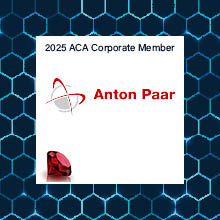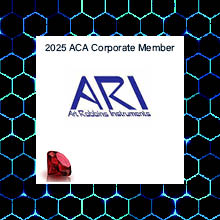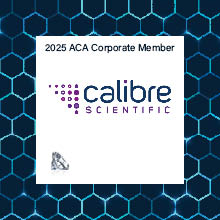- Home
- About ACA
- Publications & Resources
- Programs
- Annual Meeting
- Membership
- -History-
- ACA Video Library
ACA Early Career Scientist Spotlight-24
Questions & Answers with Nooriel BanayanWhat is your general area of research? My general area of research involves understanding how the dynamics of proteins give rise to their thermodynamic and chemical properties. The larger picture of my research involves understanding exactly which surface properties of proteins drive their propensity to crystallize and identifying features one can engineer into their own proteins to help them crystallize efficiently. What excites or interests you about crystallography? What interests me in crystallography is its wide-reaching applications in all areas of science and medicine. Everything from basic science to drug-design relies heavily on crystallography making it the “bread and butter” of modern science. Plus, given the current “hit or miss” proposition involved in making proteins crystallize, I feel like every protein that does crystallize not only reveals something biologically important about that protein, but also provides another physical hint at what drives protein crystallization.
What was the first crystal structure you collected data on/solved? RNAseH from E.Coli. Nothing particularly interesting about this protein except that it’s dynamics have been extensively studied in NMR and molecular dynamics simulations making it an excellent reference protein for developing engineering techniques on. Why this protein was chosen as a model for such detailed and sophisticated studies remains an enigma to me. But it has some pretty cool loop motions involving a tryptophan and an arginine. What are some of the other projects going on in your group? Who else is in your group? The “big project” in my group involves investigating the dynamics behind the pathological action of the F508del mutant of the cystic fibrosis transmembrane conductance regulator. My lab uses Cryo-EM and novel experimental techniques to effectively “trap” the mutant protein in its transient pathological conformations ultimately identifying the trajectory of the protein misfolding. Moreover, my lab is identifying how the drug treatments for cystic fibrosis correct the pathological misfolding of the protein. What is your favorite spot within your university? This isn’t in the university, but my favorite spot near the university is a café called Hungarian Pastry. Best croissants in New York City. What is something that the last year has taught you? This is totally benign and wildly unscientific, but this last year taught me that I really miss cable TV. There is something special (and definitely nostalgic) about having to wait a week for the next episode of your favorite TV show. How did you create your poster? Microsoft PowerPoint and a lot of coffee. Is there any software program that you think other researchers should know about? This is the best piece of software out right now (I am purely unbiased, of course) https://www.pxengineering.org/bulkr/. This software is the crux of my thesis and it’s something I worked really hard to make easy to use and the results easy to interpret. Basically, we have shown that lysine-to-arginine substitutions help non-crystallizable proteins crystallize. This software takes a multi-alignment file of a protein as an input (in clustal format), and outputs a rank-ordered list of lysine sites that researchers should substitute with arginine to help their protein crystallize more efficiently. We have shown this software helps recalcitrant proteins crystallize while maintaining their native 3D conformation and thermal stability. Very few things are more frustrating, time-consuming, and demoralizing than making a recalcitrant protein crystallize; this software aims to help proteins crystallize in record time. What inspires your research? What inspires my research is the prospect of creating tools and methods that help expedite drug-target discovery and development. Imagine if during the next global pandemic, there was an expedited route to drug-target and discovery. Instead of waiting a year or more for a drug to treat the disease, there could be a drug available to the public within a matter of weeks of identifying a viable drug-target in the pathogen. I have always been of the persuasion that no matter the research paradigm being investigated in the lab, scientific results ought to translate into a more meaningful and optimistic human experience for people on Earth. What are some of your favorite non-science activities? Landscape photography, reading books authored in the 1800’s, exercise, and country music. Did I mention coffee? How do you explain crystallography to your non-crystallographer friends and family? Protein crystallography is almost the same as making rock candy from sugar water. Both crystallize using the same physical principles, with the only difference being that one of the crystals you can have with tea or coffee, and the other crystal you shoot an x-ray beam at. |






















